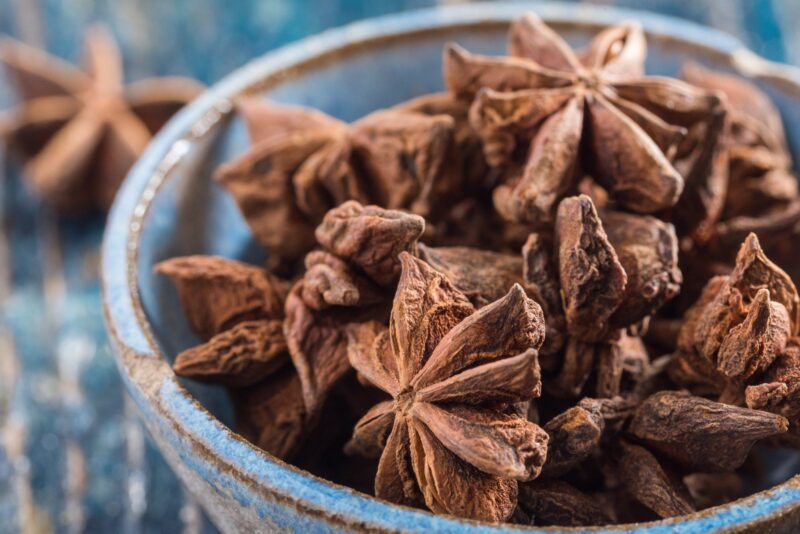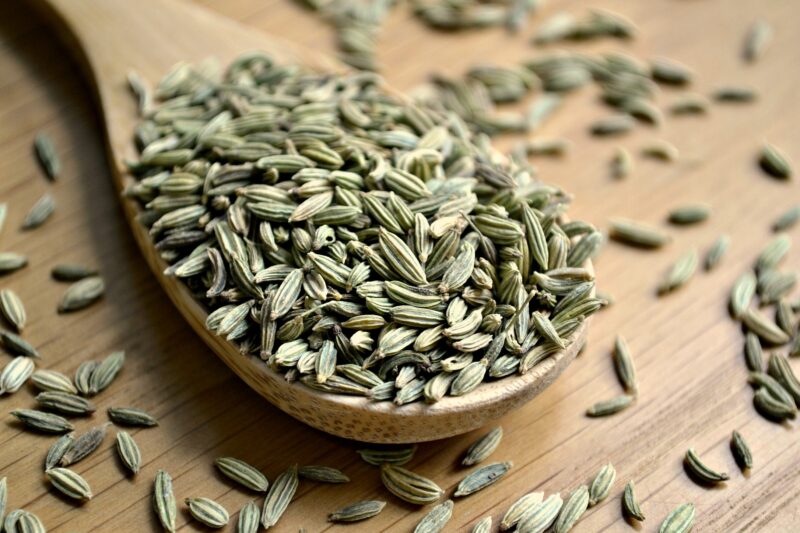Fennel seeds are small, greenish-brown seeds with a distinctive flavor that is both sweet and slightly spicy. They are one of those ingredients that can add a burst of unique flavor to your dishes. But what do you do when you’re in the middle of cooking and realize you’re out of them?
Don’t panic! There are plenty of awesome substitutes you likely already have in your kitchen. Today, I’ll share my top 10 substitutes that I’ve personally tried and loved. These alternatives will keep your dishes just as tasty and aromatic, trust me.
1. Anise

Anise seeds are probably the closest match to fennel. Both come from the Apiaceae family and have that sweet, licorice-like taste we all love. This makes Anise a great stand-in for fennel in both savory and sweet dishes.
Anise seeds are a bit smaller and pack a stronger punch compared to fennel. They’re a staple in Mediterranean and Middle Eastern cooking, making meats, veggies, and baked goods taste amazing.
How to use it
You can use anise seeds in the same amount as fennel seeds in your recipes. They’re fantastic in baking and sweets like cookies and cakes, letting their sweet flavor really shine. For an extra flavor boost, grind the seeds to release their oils. And if you love tea, toss in some whole anise seeds for a warm, comforting drink.
2. Caraway

Caraway seeds have a slightly different flavor, with a mix of anise and a peppery undertone. You’ll find them in a lot of European dishes, especially in bread, soups, and sausages. Caraway brings a distinct, slightly bitter flavor that stands out, adding a unique twist to your dishes.
Use caraway seeds in a 1:1 ratio to fennel. Their strong flavor can give your stews and roasted meats an interesting twist. They’re also great in sauerkraut and other fermented foods, where their flavor really develops. Try toasting them before using to bring out their flavor and aroma even more.
3. Dill
Dill seeds have a mild, slightly bitter taste with a hint of caraway. They’re not as sweet as fennel but still offer a similar aromatic quality. These are popular in Scandinavian and Eastern European cuisines, and perfect for enhancing pickles, bread, and fish dishes.
4. Celery

Celery seeds have a strong, earthy flavor with a slight bitterness. They’re more pungent than fennel but can work as a substitute in certain recipes. These are often used in American and Indian cuisines to add depth to salads, soups, and stews.
How to use it
Since celery seeds are potent, use them sparingly. A good rule of thumb is to use half the amount of celery seeds as you would fennel. They’re excellent in soups, salads, and dressings. You can also grind them and mix them with salt to create celery salt, a great seasoning for various dishes. Add them to coleslaw or potato salad for an extra burst of flavor.
5. Cumin
Cumin seeds bring a warm, earthy flavor with a slight bitterness and a hint of sweetness. While not as sweet as fennel, cumin adds depth and complexity to dishes. It’s a staple in Indian, Middle Eastern, and Latin American cuisines, enhancing everything from curries to tacos with its distinctive taste.
Use cumin in a 1:1 ratio to fennel. They’re perfect for curries, stews, and roasted veggies, imparting a rich, aromatic flavor. Toasting the seeds before using them enhances their flavor and releases their essential oils. If you’re using ground cumin, use a bit less than the recipe calls for, as it’s more concentrated.
6. Coriander

Coriander seeds give off a citrusy and slightly sweet taste. They aren’t as strong as fennel, but they add a nice aromatic touch. You’ll often find them in Indian, Middle Eastern, and Mediterranean cooking. Their light, lemony flavor can brighten up your recipes and add a refreshing note.
7. Star anise
Star anise has a bold licorice flavor, even stronger than fennel seeds. It’s a staple in Asian cuisine, especially in Chinese five-spice powder. Plus, the star-shaped pods look pretty cool in your dish. But be careful, a little goes a long way.
How to use it
Start with half the amount of star anise as fennel seeds due to its intense flavor. It shines in slow-cooked dishes, stews, and braised meats. You can also infuse liquids like broths and syrups. Just remember to take out the pods before serving to avoid an overpowering taste.
8. Fenugreek

Fenugreek seeds have a slightly bitter, nutty flavor with a hint of sweetness. They’re a favorite in Indian cuisine, especially in spice blends like curry powder. Fenugreek can add a deep, complex flavor to your dishes, balancing out sweetness with its bitterness.
Use fenugreek in a 1:1 ratio with fennel. These seeds work well in curries, stews, and spice rubs. Toast them to reduce bitterness and bring out the nutty flavor. If you’re using ground fenugreek, go easy—it’s more concentrated than whole seeds.
9. Tarragon
Tarragon isn’t a seed, but it has a similar anise-like flavor to fennel. Its fresh, slightly sweet taste makes it a good alternative in some dishes. It’s a go-to in French cuisine, particularly in sauces like Béarnaise and chicken dishes.
How to use it
Swap in fresh tarragon for fennel seeds in salads, sauces, and dressings. Since tarragon is more delicate, add it towards the end of cooking to keep its flavor. Dried tarragon works too, but it’s not as potent as fresh. Pair it with other herbs like parsley or chervil for a classic French touch.
10. Licorice root

Licorice root has a strong, sweet flavor similar to fennel seeds. You’ll see it often in herbal teas and sweets. Its distinctive taste can add a unique sweetness to your dishes, making it versatile for both sweet and savory recipes.
In summary
Running out of fennel seeds doesn’t mean your dish is doomed. These ten substitutes can step in and save the day, each bringing its own unique twist to your recipes. From the sweet and licorice-like anise to the earthy and aromatic cumin, there’s a substitute for every dish and every palate.

